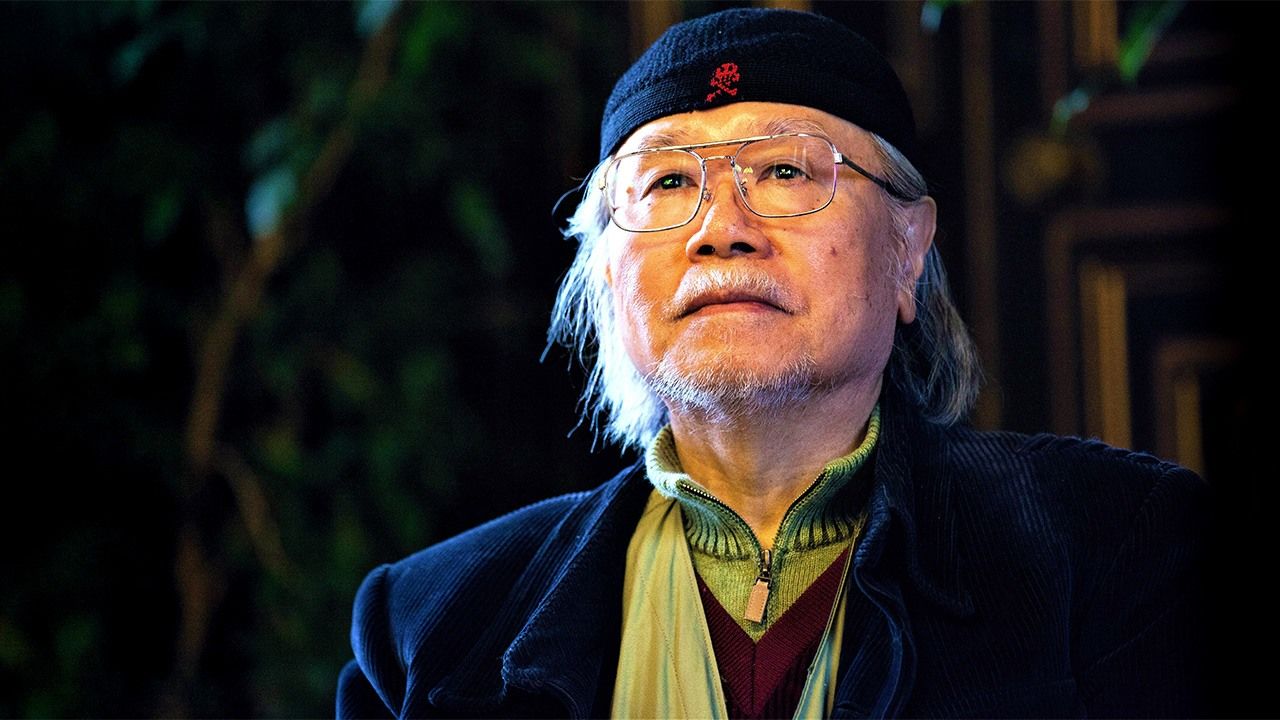
Matsumoto Leiji: A Master Worldbuilder Who Redefined Sci-Fi for Postwar Japan
Manga Anime World Music- English
- 日本語
- 简体字
- 繁體字
- Français
- Español
- العربية
- Русский
The Infinities of Space and the Four-and-a-Half-Tatami-Mat Room
The world lost manga artist and animator Matsumoto Leiji to acute heart failure on February 13, 2023. He was 85 years old.
He was a master of creating worlds. On the one hand, he spun epic tales set in deepest outer space; on the other, he introduced readers to a student so poor that mushrooms grew on laundry moldering in his tiny four-and-a-half-tatami-mat room.
A traditional floor covering measuring a bit under one by two meters, tatami mats are the standard measure of floorspace in Japan. Four and a half indicate a tiny, square room. It’s synonymous with the cramped, cheap places many young people find themselves living in when they follow their dreams to the big city.
The vastness of space and the confines of a 4.5-mat room represent different ends of the spectrum. But when you look at the characters Matsumoto places in these disparate spaces, you’ll notice two faces: adults who guide and protect young people, and the young people who look up to them.
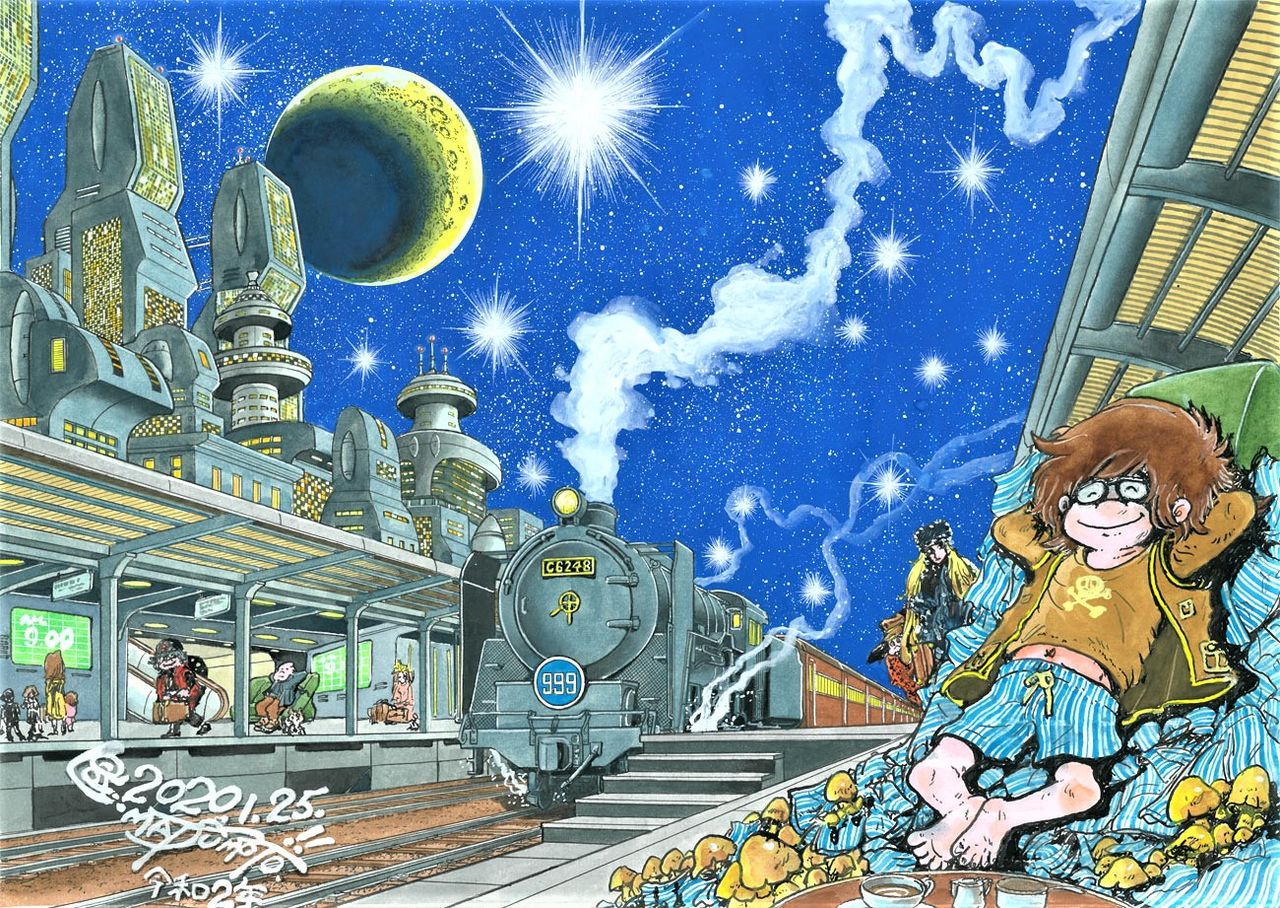
Matsumoto’s Leijisha website (https://leijisha.jp/) is filled with fun illustrations, such as this one penned by Matsumoto in November 2019 to commemorate being released from the hospital after collapsing on a visit to Italy. (© Matsumoto Leiji/Leijisha)
Learning from His War-Veteran Father
Matsumoto was born in 1938 to a family with roots in the samurai caste, as the middle child of seven brothers and sisters. His mother was a former teacher, and his father a graduate of the Imperial Japanese Army Academy who had been promoted as far as major, going on to fly fighter planes in World War II.
Matsumoto modeled Captain Okita Jūzō from the 1974 Uchū senkan Yamato (Space Battleship Yamato; also aired in English as Star Blazers) on his father. Yamato told the story of humanity embarking on a desperate journey to save the Earth from annihilation at the hands of the alien Gamilas Empire. The crew of the Yamato travels to distant Iscandar in search of a device that can cleanse the Earth of deadly radiation. Okita, who commands the mission, is driven by duty and the will to succeed at all costs, yet possesses the empathy to respect the enemies with whom he crosses swords in battle.
This character, who so closely resembles Matsumoto’s father in appearance, also conveyed his words to millions of fans by articulating the main theme of Yamato, which is that “people are put on this planet to live, not to die.” Matsumoto would relate these words as those often spoken by his own father.
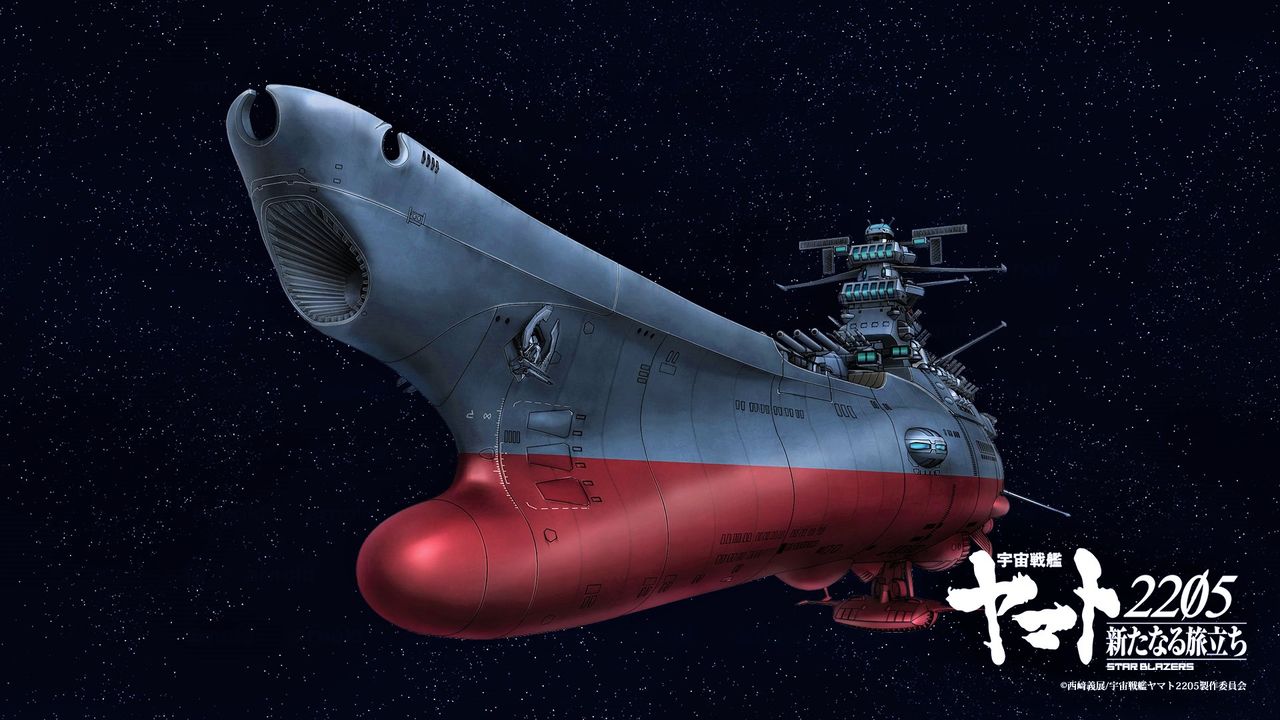
Yamato has many sequels and remakes, most recently the 2021 Uchū senkan Yamato 2205: Arata-naru tabidachi (Space Battleship Yamato 2205: The New Voyage). A follow-up, Yamato yo towa ni (Be Forever Yamato), is in the works. (© Nishizaki Yoshinobu/Yamato 2025 Production Committee)
Captain Okita plays the father-figure to the “family” of the Yamato crew. In contrast, to the eponymous Space Pirate Captain Harlock (1977), his beloved starship Arcadia is his family.
Harlock is set in the year 2977. Humanity has reached the stars, but in the process all but lost its will to live. A race of alien beings called the Mazone threatens the Earth, yet Earth’s leaders refuse to acknowledge the danger. Our only hope is Captain Harlock, flying under his own flag with a ragtag crew of space pirates.
Harlock is a lone wolf who refuses to retreat. Beneath his taciturn, expressionless face boils great passion, and he is fiercely devoted to his young and inexperienced crew, who look up to him as a man among men. Harlock, a loner who fights for freedom, represents one of Matsumoto’s personal favorite characters.
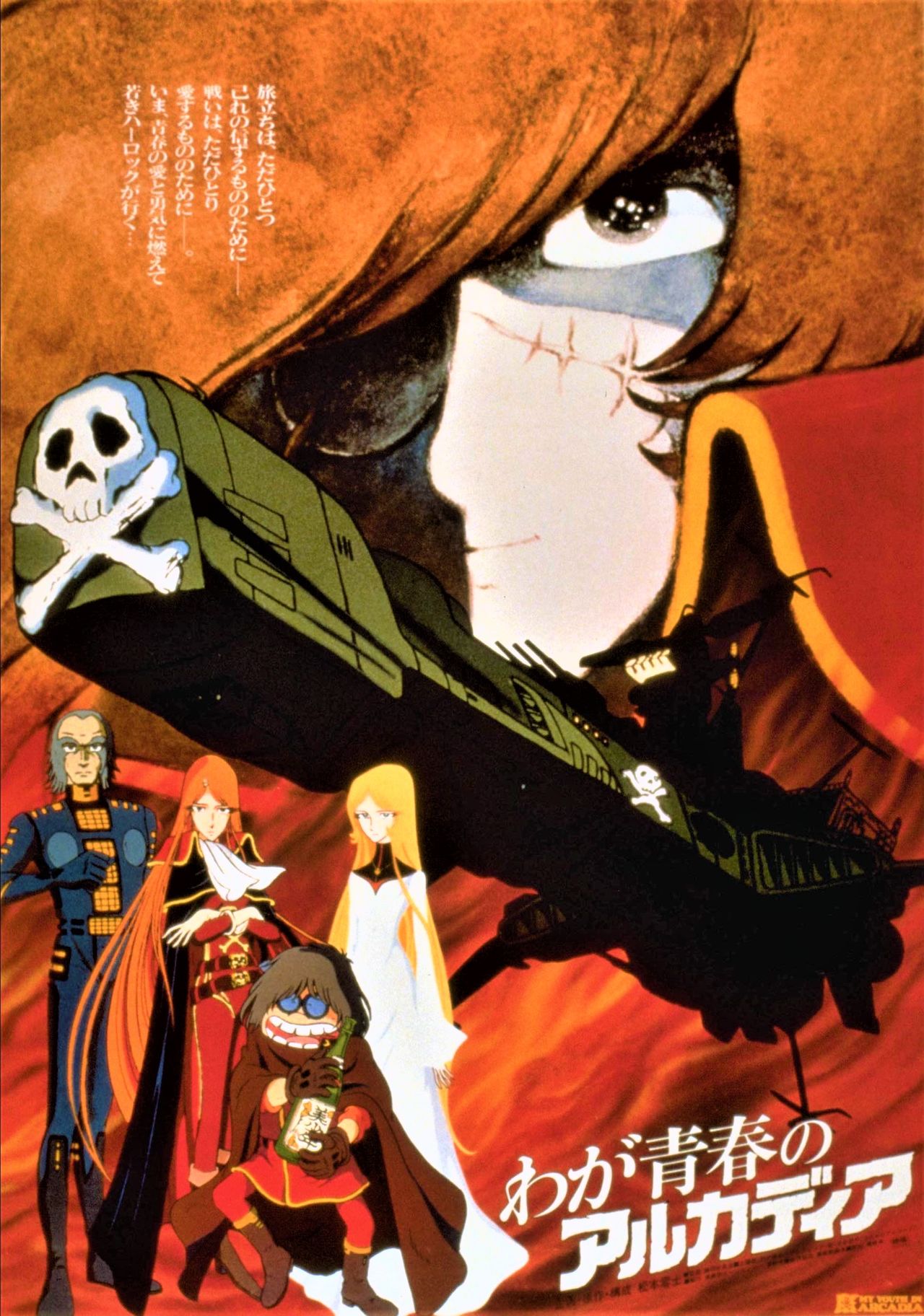
Space Pirate Captain Harlock aired in Japan in 1978–79. A 1982 theatrical version, Waga seishun no Arukadia (My Youth in Arcadia), told the story of Harlock’s younger adventures and how he came to meet his sidekick Ōyama Tochirō. (© Matsumoto Leiji / Tōkyū Agency; © Matsumoto Leiji / Tōei Animation)
The Story of Youth and Growth
Hoshino Tetsurō is the protagonist of Galaxy Express 999, a 1977 series set in the far future of Earth, where those rich enough to afford mechanical bodies can live for a thousand years. The poor, with their flesh and blood bodies, are hunted by the mechanized for sport.
After Tetsurō’s mother is killed, he longs to turn machine himself, but lacks the means. Then he meets a beautiful human woman named Maetel who tells him a mechanical body awaits on the distant planet Andromeda. The pair board the Galaxy Express 999 (pronounced “three-nine”) for an epic journey to the stars.
The number 999, of course, is just before 1,000. It represents incompleteness, and the end of youth. Tetsurō learns much on his journey, at first under the protection of Maetel, until he grows up enough to protect her himself.
Matsumoto was just 15 when he won his first manga award, and just 18 when he left home, boarding a train bound for Tokyo to become a professional. This long solo trip is said to have inspired him to create Galaxy Express 999.

A Seibu Rail line decorated with Maetel from Galaxy Express 999, photographed on April 30, 2009, in Tokorozwa, Saitama. (© Jiji)
In Tokyo, Matsumoto lived in a cheap boarding house. Boarding houses, which are little seen in recent times, were shared living situations where the landlord provided meals as well as lodging. His experiences in the house informed his first major hit, Otoko oidon (I Am a Man), in 1971.
The protagonist, Ōyama Nobotta, lives in a tiny 4.5-mat room. Short, bowlegged, and clad in shabby clothes, he dreams of making it big someday. In this he reflected the hopes and dreams of many boarding-house dwellers of the day.
Laid off from the factory where he worked, and a dropout from the night school where he was studying for his high school diploma, he tries and fails to land odd jobs over and over again. The gifts he sends to potential dates are tossed away unopened. He is all alone. But the old woman who runs the boarding house, and his fellow lodgers, treat him with kindness.
I Am a Man was more than a hit; it represented the first manga Matsumoto drew entirely for himself. His aim was to youth, in whatever form it might take, in a positive light.
At one point Ōyama comes down with jock itch, an affliction many young men suffered through in silence out of embarrassment. Matsumoto’s openness about such a delicate topic resulted in many letters from grateful male readers, and even women who told him that their boyfriends had cheered up after reading it.

I Am a Man ran in Kodansha’s Weekly Shōnen Magazine from 1971 to 1973. There are nine compilations in total. (© Kyōdō)
Linking Matsumoto’s “Small Worlds”
The squalid little world of I Am a Man is actually connected to the vast universe of Space Pirate Captain Harlock. Harlock’s best friend, Ōyama Tochirō, is a descendant of Ōyama Nobotta.
Galaxy Express 999 crosses over into the world of Captain Harlock and his female counterpart, the titular star of Queen Emeraldas. Matsumoto is fond of placing characters from various works together, linking his worlds in ways both obvious and subtle.
Matsumoto treats his characters as all parents do, wanting to see their children flourish. You could call his pantheon of characters a family that spans time and space.
We inherit everything about ourselves from our mothers and fathers. Our lives span generations in an unbroken chain, and in that endless loop, past and present and future blur, as all destinies cross like a web of converging train lines. Such is the vision driving Matsumoto’s imagination.
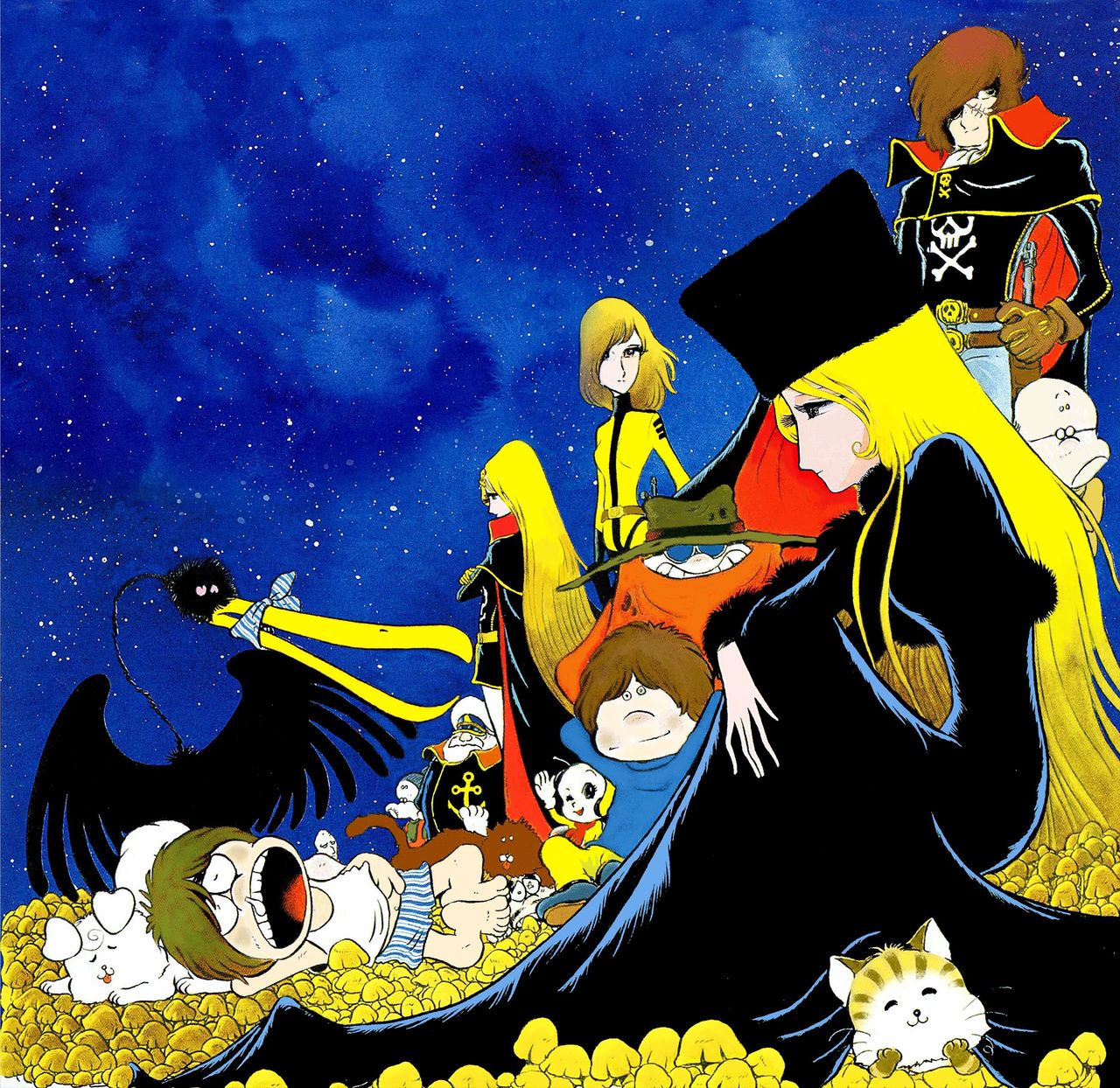
An illustration drawn by Matsumoto for the January 2018 Matsumoto Leiji Exhibition at Isetan in Shinjuku, Tokyo, one of countless exhibitions of his work that have been held. (© Matsumoto Leiji)
The Universal Appeal of Matsumoto’s World
Matsumoto believed that all people shared common values, and this idea that so infused his works is key to their universal, global appeal to fans around the world.
Harlock enjoyed great popularity in France, famously attaining a 70% viewership during its airtime. I Am a Man was released in English as well. And Space Battleship Yamato, with its theme of travelling far and back to save humanity, resonated deeply with American viewers. Matsumoto has spoken about being visited by foreign fans—from not only the United States, but China, Belgium, and many other nations.
One day, a pair of French musicians approached Matsumoto, saying that they had seen his work when they were just five, and asking to collaborate. The duo turned out to be the band Daft Punk, and the collaboration became the animated musical feature Interstella 5555. This was highly praised by critics, including Allegra Frank in Slate magazine, who called it a “glorious” work “that that brings two amazing art forms together seamlessly.”
The video for “One More Time,” released by the French techno band Daft Punk in 2001, features animation by Matsumoto. It is part of a larger animated opera called Interstella 5555.
(Originally published in Japanese. Banner image: Matsumoto at the Festival international de la bande dessinée d’Angoulême in France, 2013. He is wearing his trademark “skull and bones” hat. © Jiji.)